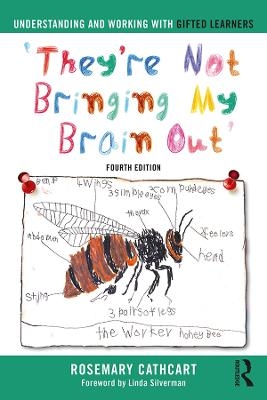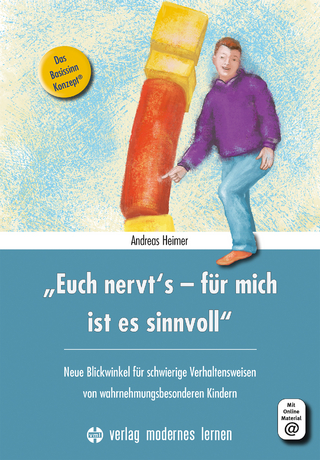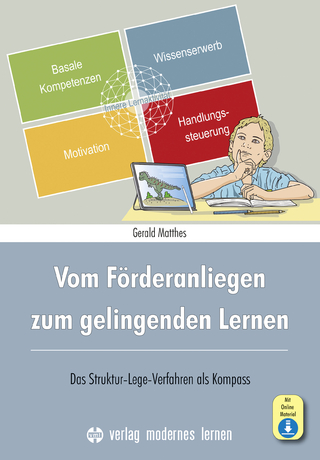
Understanding and Working with Gifted Learners
Routledge (Verlag)
978-0-367-44365-8 (ISBN)
Have you ever wondered…
how to cope with a very bright child when you’ve got 30 other children in the class?
what to do now you’re in charge of the gifted programme?
what giftedness really is, and what it means?
Introducing for the first time in book form, the Holistic Descriptor of Giftedness – a definition for the 21st century, recognising the impact of giftedness on the whole person from infancy to adulthood, providing a deep and satisfying approach to working with gifted learners.
Based on this far-reaching approach, this book:
sets out five key concepts to help you recognise and meet the needs of gifted learners at every level of schooling (the REACH model)
includes a wealth of thoroughly practical teaching strategies to implement the model, with loads of high-interest examples drawn from work by teachers just like you and from gifted learners just like those you know
introduces a special three-question conceptual lesson-planning tool to bring all these strategies into highly effective and exciting units of work
covers a wide range of supporting topics such as identification, parent perspectives, cultural differences, acceleration, grouping, giftedness with other special needs, and more.
This book is written for everyone who lives or works with a gifted young person – classroom teachers, gifted programme coordinators, parents, special needs teachers, counsellors and home-schooling families.
Rosemary Cathcart has been involved in almost every role within gifted education from parent to college of education tutor since the mid-1980s. Founder of New Zealand’s first national gifted education centre and One Day School, she now heads an international award-winning consultancy specialising in professional development in this field.
Dedication – in gratitude
Acknowledgements
Foreword by Dr Linda Silverman
Preface: Why are we here?
SECTION I: THE ISSUES
Chapter 1. Why bother? They’ll succeed anyway, won’t they? A reality check!
Chapter 2. So who are they?
Chapter 3. What makes them tick? What makes the gifted gifted?
Chapter 4. Introducing the Holistic Descriptor
Chapter 5. How will I know one when I meet one?
Chapter 6. How do I teach them when I find them? Setting the scene…
SECTION II: RESOLVING THE ISSUES: TEACHING STRATEGIES
Chapter 7. Thinking about attitudes
Chapter 8. Thinking about skills
Chapter 9. Thinking about extension
Chapter 10. Thinking about balance
Chapter 11. Thinking about evaluating one’s own work
SECTION III: RESOLVING THE ISSUES: TEACHING STRATEGIES
Chapter 12. Generating a high level of interest in learning
Chapter 13. Developing the tools of thought: observation skills
Chapter 14. Developing the tools of thought: study and research skills
Chapter 15. Developing the tools of thought: communication skills
Chapter 16. Developing the tools of thought: thinking skills
Chapter 17. Developing the tools of thought: organisational skills
Chapter 18. Developing the child’s intellectual and creative potential as far as possible
Chapter 19. Using concepts which challenge the child’s current knowledge and level of thinking
Chapter 20. Drawing on the arts: for those who are not interested as well as those who are!
Chapter 21. Drawing on the arts: the language of painting
Chapter 22. Drawing on the arts: the language of poetry
Chapter 23. Encouraging original work
Chapter 24. Guiding the gifted reader
Chapter 25. Fostering emotional, social and ethical growth – beginning with the self
Chapter 26. Fostering growth towards emotional and social maturity
Chapter 27. Fostering ethical growth
Chapter 28. Evaluating our own learning, thinking and creating
SECTION IV: RESOLVING THE ISSUES: LESSON PLANNING
Chapter 29. Conceptual planning: a tool for the teacher
Chapter 30. Conceptual planning: a structure for lessons
Chapter 31. Bringing it all together
SECTION V: GIFTEDNESS AND RELATED DIFFERENT NEEDS
Chapter 32. Gifted children from minority cultures
Chapter 33. The Twice-exceptional child
Chapter 34. The needs of parents with gifted children
SECTION VI: NUTS AND BOLTS
Chapter 35. Nuts and bolts: some basics
Chapter 36. On being A REACH teacher
Endpiece
Appendices
1. Screening checklist for teacher use
2. How do I know if my child/my student is gifted?
3. Student survey – How could I get more out of school?
4. Interest inventory – The Famous YOU!
5. Visual-Spatial Learners: Characteristics comparison – Dr Linda Silverman
| Erscheinungsdatum | 23.03.2020 |
|---|---|
| Zusatzinfo | 40 Halftones, black and white; 40 Illustrations, black and white |
| Verlagsort | London |
| Sprache | englisch |
| Maße | 156 x 234 mm |
| Gewicht | 444 g |
| Themenwelt | Sozialwissenschaften ► Pädagogik ► Sonder-, Heil- und Förderpädagogik |
| ISBN-10 | 0-367-44365-1 / 0367443651 |
| ISBN-13 | 978-0-367-44365-8 / 9780367443658 |
| Zustand | Neuware |
| Informationen gemäß Produktsicherheitsverordnung (GPSR) | |
| Haben Sie eine Frage zum Produkt? |
aus dem Bereich


